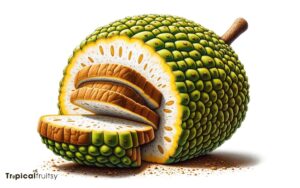Who Brought Breadfruit to Jamaica? Explore!
Breadfruit, a staple crop in many tropical regions, was introduced to Jamaica in a deliberate act of botanical and agricultural expansion.
The man responsible for this introduction was Captain William Bligh, a British naval officer.
In the late 18th century, the British Empire sought to provide inexpensive, high-energy food sources for slaves on Caribbean plantations.
In 1793, following his infamous mutiny-plagued voyage on the HMS Bounty, Captain Bligh successfully transported breadfruit plants from Tahiti to Jamaica aboard the HMS Providence.
This initiative was part of a broader scheme engineered by Sir Joseph Banks, a renowned botanist and president of the Royal Society.
The introduction of breadfruit to Jamaica not only diversified the island’s agricultural landscape but also had profound cultural and economic impacts, which continue to resonate to this day.
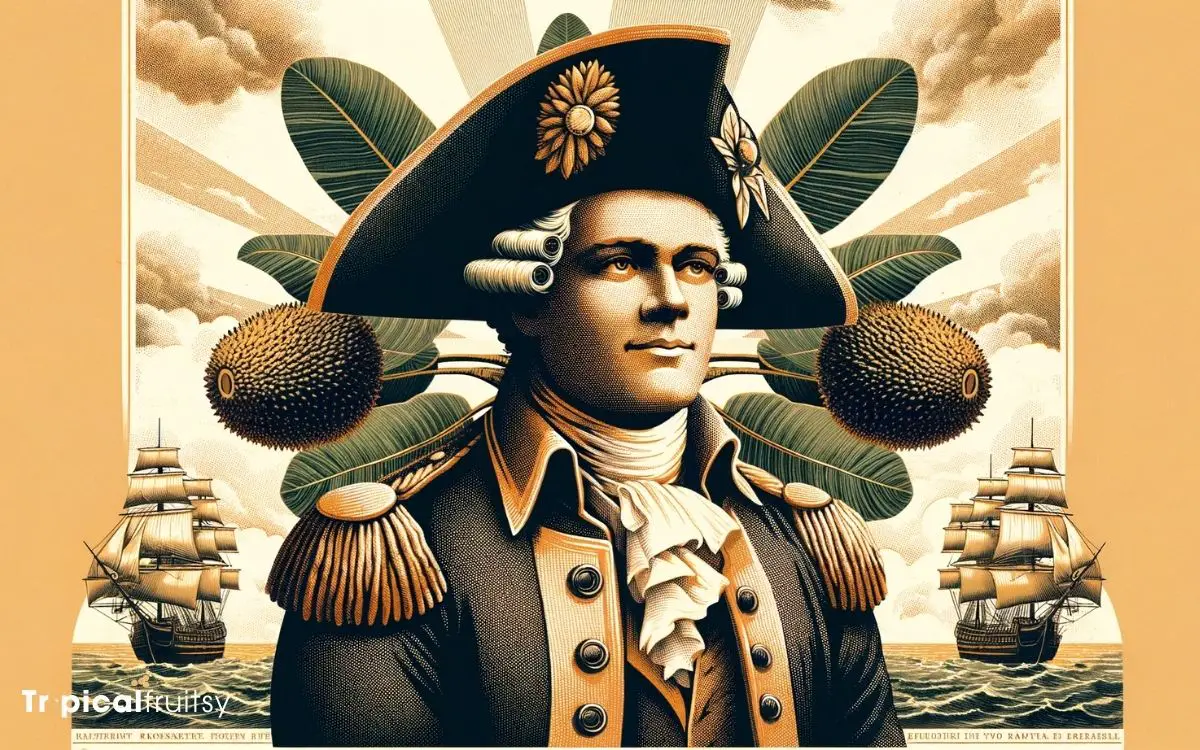
Key Takeaway
Origins of Breadfruit
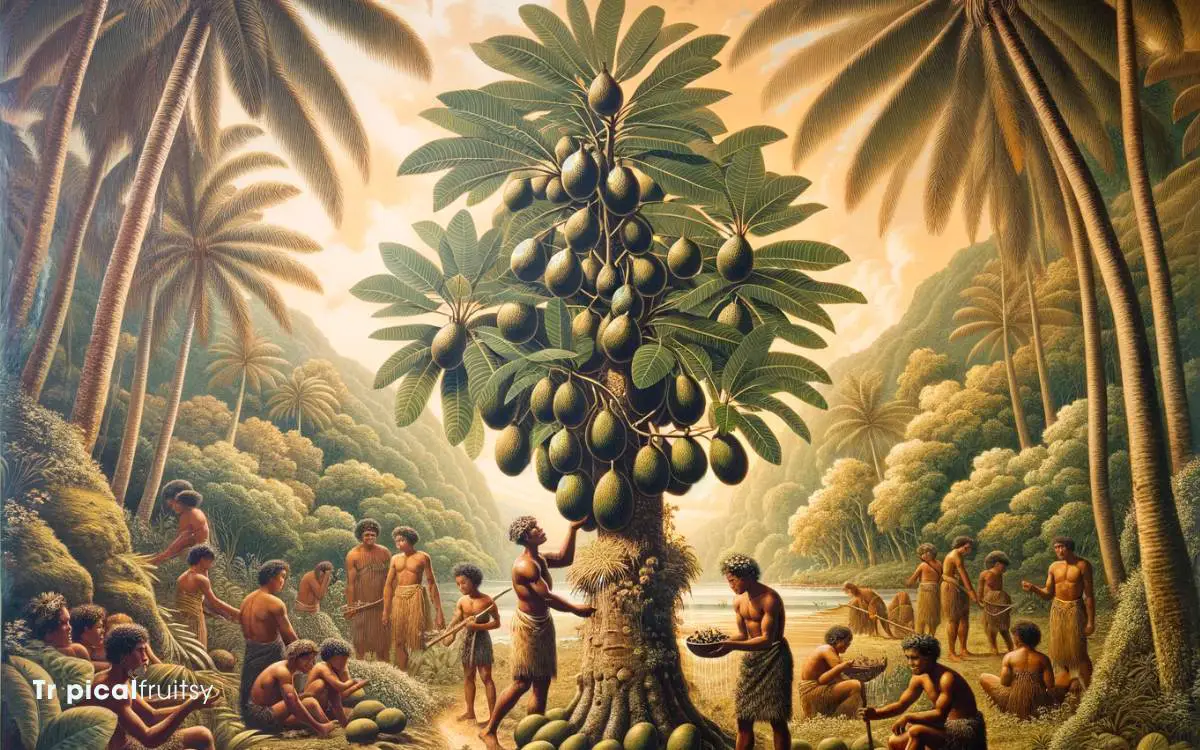
Before delving into its introduction to Jamaica, it is essential to recognize that breadfruit (Artocarpus altilis) originates from the South Pacific, particularly the Polynesian islands.
This staple crop, with its large, lobed leaves and green, bumpy skin, has been a significant source of sustenance due to its high energy content and versatility.
Genetic studies suggest that breadfruit’s domestication can be traced back thousands of years, indicating its deep cultural and agricultural importance in Oceania.
In these regions, traditional propagation methods have been refined over generations, allowing for the cultivation of numerous varieties, each adapted to specific local conditions.
This meticulous selection process has resulted in a robust genetic diversity within the species.
Understanding this heritage prepares us to explore how breadfruit made the pivotal journey to Jamaica.
The Journey to Jamaica
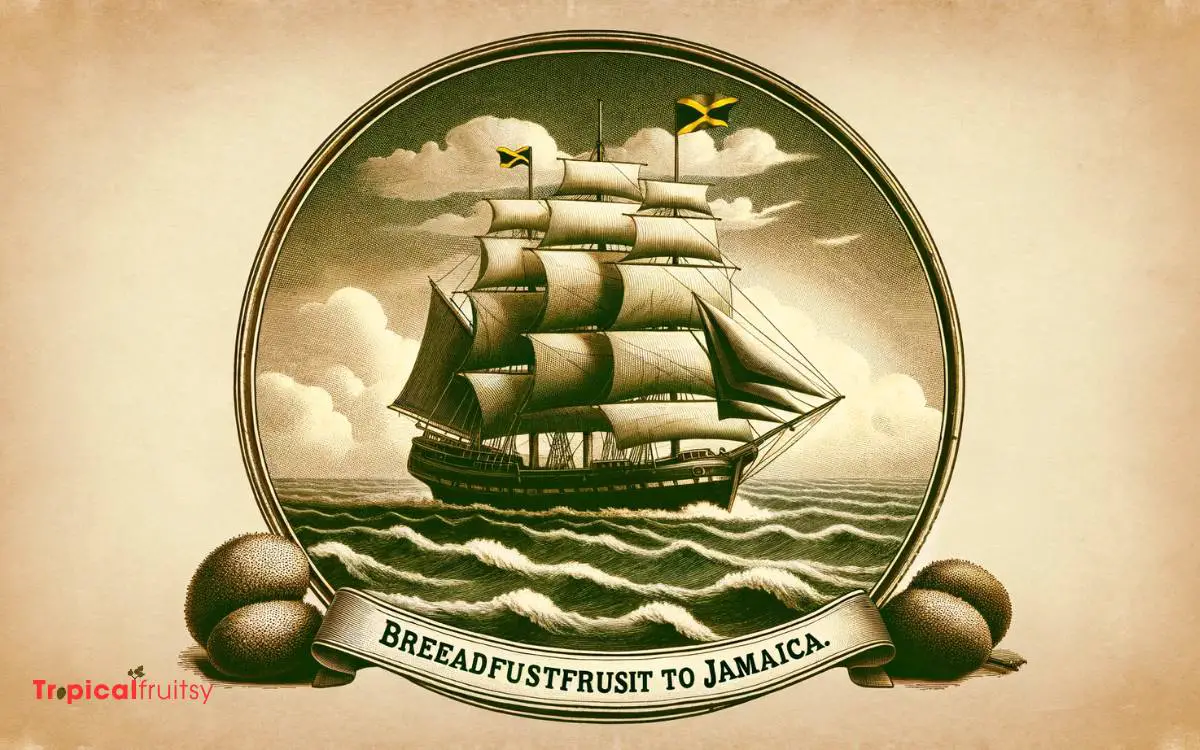
Historically, the breadfruit was introduced to Jamaica by Lieutenant William Bligh, who frequently transported botanical specimens between continents during the 18th century.
The journey of the breadfruit to Jamaica was a notable venture, initiated with the intent of providing a cheap and sustainable food source for enslaved people on the island’s plantations.
Bligh’s voyage aboard the HMS Bounty in 1787 was commissioned by the Royal Society at the behest of planters who sought to cultivate the fruit, recognizing its potential to thrive in Jamaica’s tropical climate.
Despite the tumultuous first attempt, which culminated in the infamous Bounty mutiny, Bligh succeeded on his second mission aboard the HMS Providence, delivering the breadfruit to Jamaica in 1793.
This event marked a significant introduction of a new staple crop to the Caribbean food economy.
Captain Bligh’s Mission
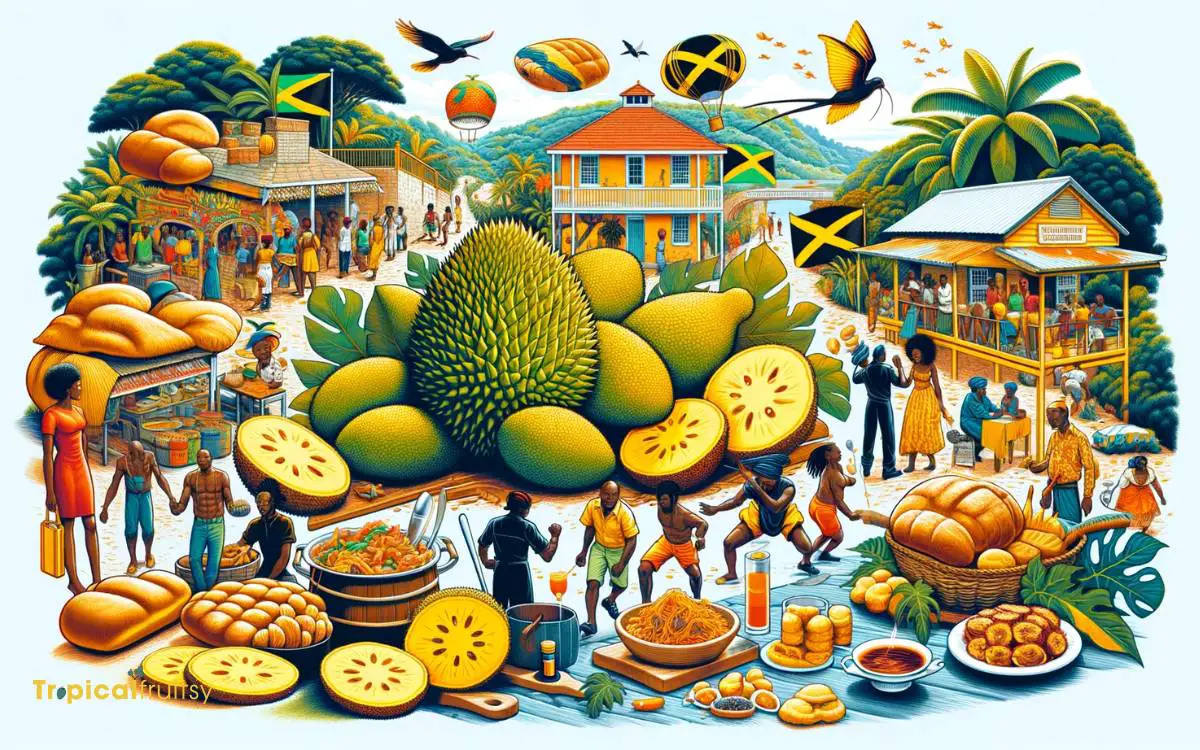
Captain William Bligh’s mission to transport breadfruit from Tahiti to Jamaica was a strategic endeavor aimed at bolstering the food supply for enslaved populations on Caribbean plantations.
The initiative, sponsored by the British government, was both a response to food scarcity and a bid to optimize the economic efficiency of the plantations.
Bligh, a seasoned naval officer, was tasked with this critical agricultural assignment because of his reputed navigational skills and prior experience in the region.
| Aspect of Mission | Significance |
|---|---|
| Transportation of Breadfruit | Economic strategy to support plantation sustenance |
| Bligh’s Naval Expertise | Ensured the success of a technically demanding voyage |
Bligh’s journey was meticulously planned, encompassing the collection, preservation, and transportation of the plants.
The mission’s underlying objective was clear: to ensure a reliable, low-cost food source for laborers, thereby maintaining the profitability of slave-driven agriculture in the British colonies.
Breadfruit’s Cultural Impact

Upon its introduction to Jamaica by Captain Bligh, breadfruit swiftly became an integral part of the island’s cuisine and cultural heritage.
This starchy staple, once a foreign introduction, assimilated into the local diet, providing sustenance and influencing culinary practices.
Its adoption was not merely a matter of taste but a reflection of the island’s socio-economic fabric, addressing food security concerns with its high yield and nutritional value.
The cultural significance of breadfruit is manifested in its presence at both communal gatherings and everyday meals, symbolizing a fusion of traditions.
Analyzing its impact reveals breadfruit as more than sustenance; it represents resilience and adaptation, becoming emblematic of Jamaican resourcefulness and the island’s ability to incorporate and celebrate elements from its multifaceted history.
Agricultural Transformation
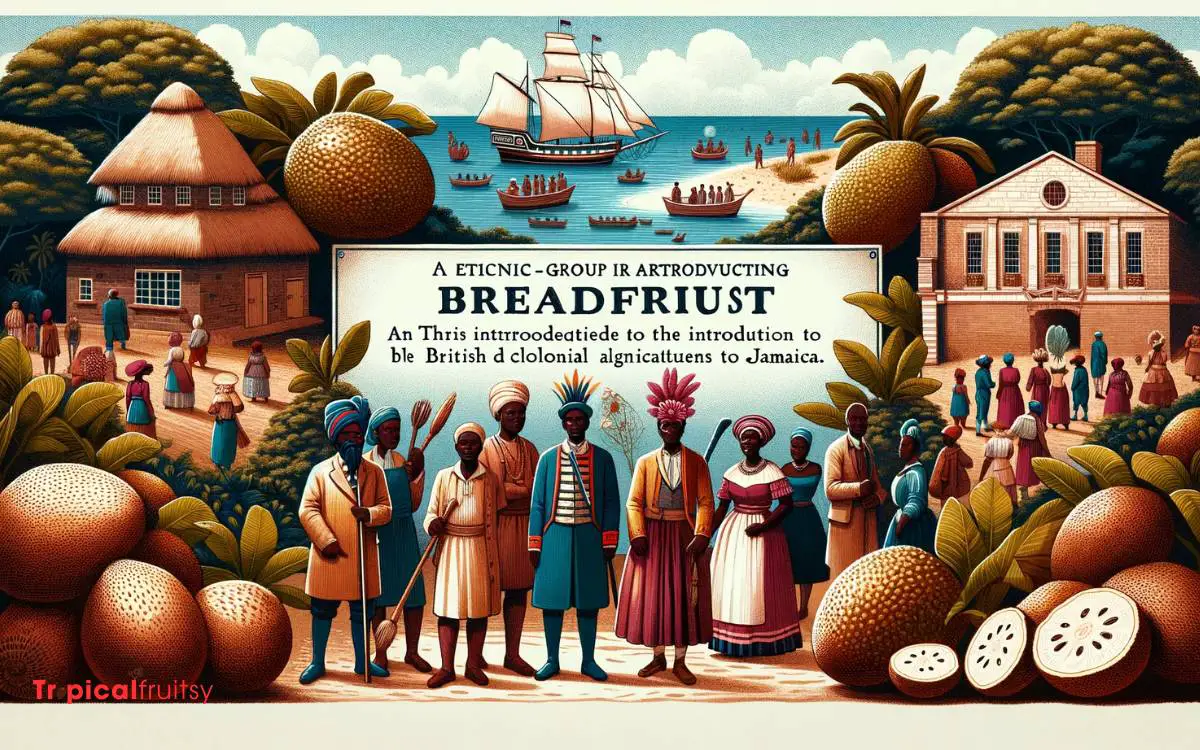
The introduction of breadfruit to Jamaica by Lieutenant William Bligh in 1793 initiated a significant shift in the island’s agricultural practices.
This versatile crop provided a new staple food source that was both sustainable and highly nutritious.
The agricultural transformation can be analyzed through the lens of crop diversification and food security enhancement.
| Factor | Impact on Jamaican Agriculture |
|---|---|
| Crop Diversification | Increased variety in local diets and reduced dependency on traditional staples like yams and sweet potatoes. |
| Food Security | Improved resilience against famine by providing an alternative food source during periods of scarcity. |
What is the Origin of Breadfruit and How Did it Spread to Different Parts of the World?
Breadfruit originated in the South Pacific, where it has nourished inhabitants for millennia. European explorers, eager to explore the native Hawaii breadfruit, transported it westward. It flourished in similar climates, its seeds and cuttings spreading across tropical regions as a versatile, sustainable food source.
Which Ethnic Group Brought Breadfruit to Jamaica
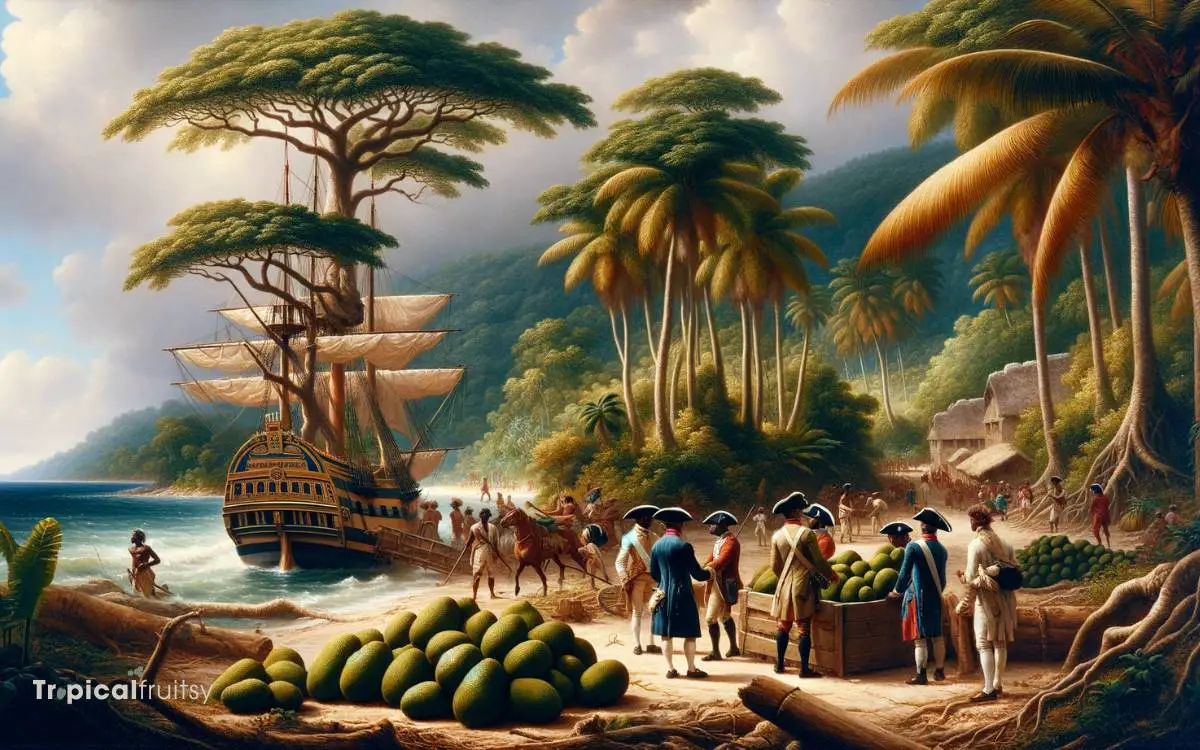
The breadfruit (Artocarpus altilis) was brought to Jamaica by the British during the late 18th century.
Captain William Bligh, a British naval officer, is credited with introducing breadfruit to Jamaica in 1793.
He transported breadfruit plants from the Pacific Islands to the Caribbean as part of a government-sponsored mission.
The goal was to provide a cheap and readily available food source for the enslaved population in the Caribbean, as breadfruit is a high-yielding and nutritious crop.
However, the introduction of breadfruit to Jamaica was met with resistance, and the crop did not initially become a staple in the local diet.
Conclusion
Captain William Bligh’s successful transportation of breadfruit to Jamaica in the late 18th century marked a significant moment in agricultural history.
While some may argue that breadfruit’s introduction had limited impact, the evidence suggests otherwise.
This versatile crop not only enriched the Jamaican diet but also contributed to social and economic shifts within the island’s agricultural landscape.
The introduction of breadfruit brought a new source of food security and variety to the Jamaican people, reducing their dependence on traditional staples like yams and cassava.
Furthermore, the cultivation of breadfruit led to the establishment of plantations dedicated to its production, creating new economic opportunities for Jamaican farmers and landowners.
This shift in agricultural focus also had broader implications for the island’s economy, as the exportation of breadfruit to other regions became a viable industry.
Overall, the successful transportation of breadfruit by Captain Bligh had far-reaching effects on Jamaican culture and agriculture.
It highlighted the profound effects of plant translocations on cultural and agricultural development, demonstrating how the introduction of a single crop can shape an entire region’s food security, economy, and way of life.





